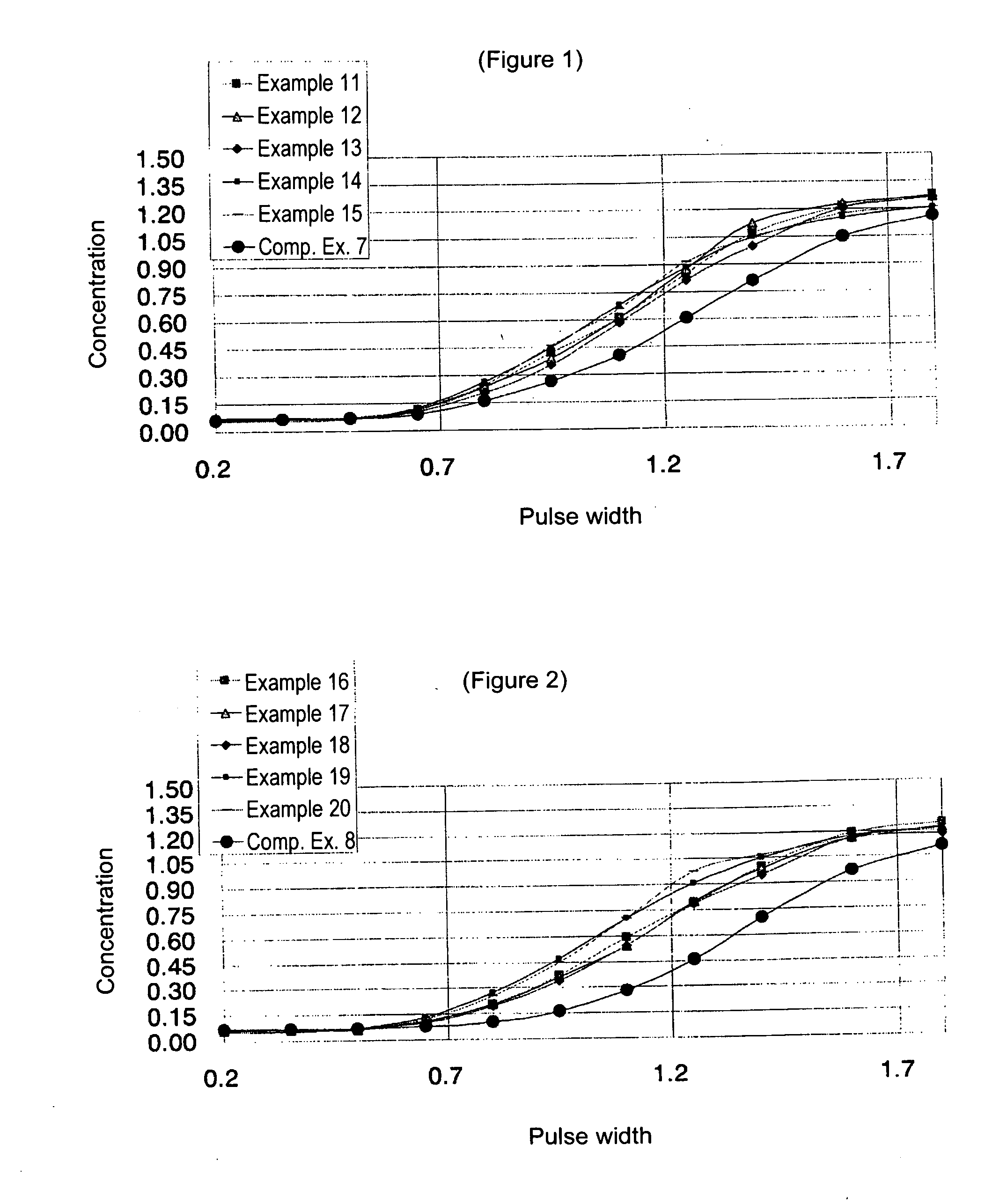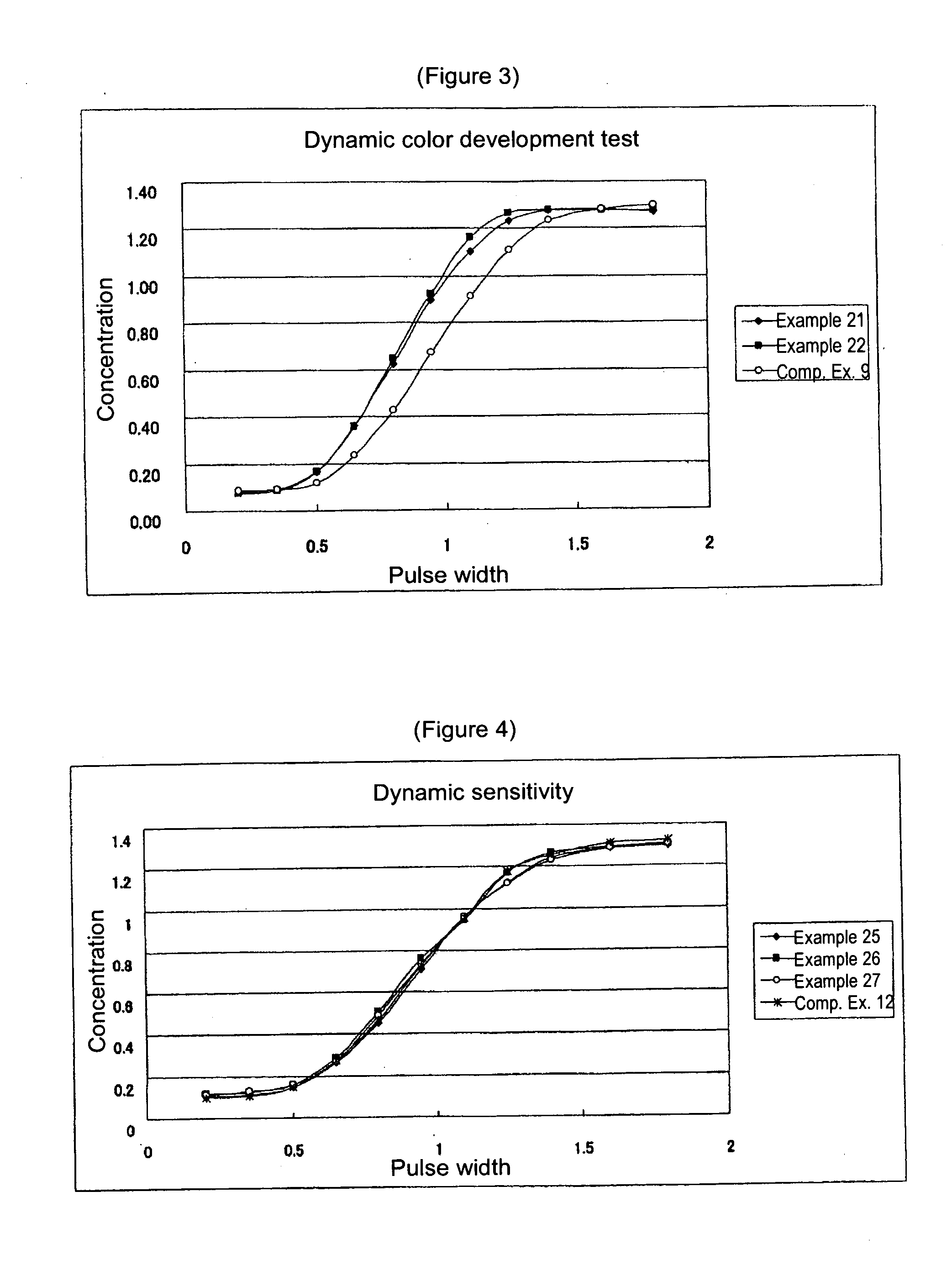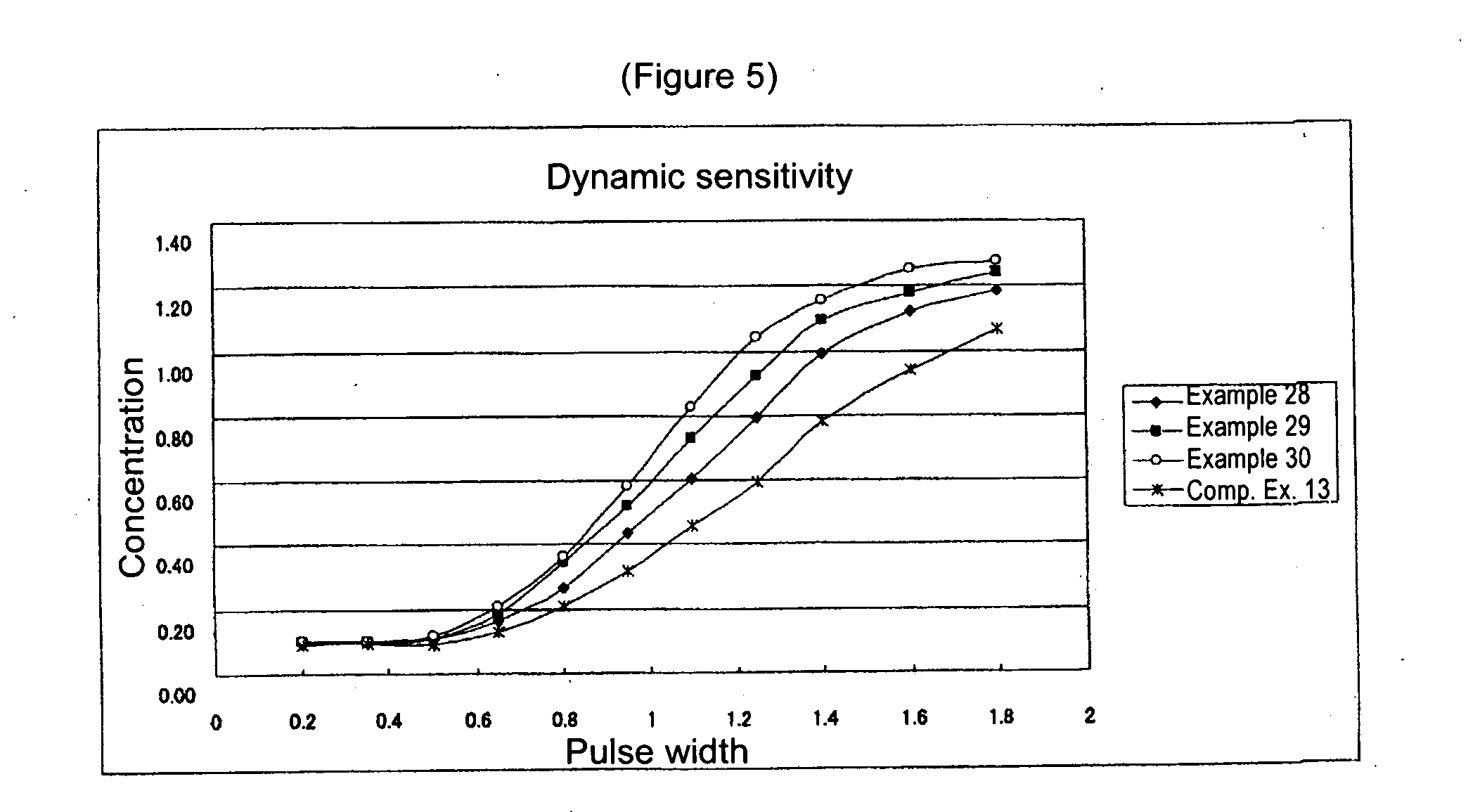Recording material using phenolic compound
a technology of phenolic compound and recording material, which is applied in the field of recording material, can solve the problems of not finding sufficiently satisfactory color-developing sensitivity, etc., and still unsatisfactory in terms of, for example, the light resistance of the background, and the recording material is still not sufficiently satisfactory. , to achieve the effect of excellent background and image stability, excellent color-developing sensitivity, and excellent light resistance and moist heat resistan
- Summary
- Abstract
- Description
- Claims
- Application Information
AI Technical Summary
Benefits of technology
Problems solved by technology
Method used
Image
Examples
example 1
[0109]
(parts: parts by mass)Dispersion solution of color-forming compound(solution A)3-di-n-butylamino-6-methyl-7-anilinofluoran16parts10% aqueous solution of polyvinyl alcohol84partsDispersion solution of color-developing agent(solution B)N-(4-hydroxyphenyl)-3-methylcinnamoylamide16parts10% aqueous solution of polyvinyl alcohol84partsDispersion solution of color-developing agent 2(solution C)4-hydroxy-4′-isopropoxydiphenylsulfone16parts10% aqueous solution of polyvinyl alcohol84partsDispersion solution of filler (solution D)Calcium carbonate27.8parts10% aqueous solution of polyvinyl alcohol26.2partsWater71parts
[0110]First, each mixture having the composition of the solution A, B, C, or D was sufficiently ground with a sand grinder to prepare dispersion solutions of the components of the solutions A to D. 1 part by mass of the solution A, 0.5 part by mass of the solution B, 1.5 parts by mass of the solution C, and 4 parts by mass of the solution D were mixed to prepare a coating sol...
examples 2 to 20
[0111]Thermal recording paper was prepared by the method described in Example 1 except that: N-(4-hydroxyphenyl)-3-methylcinnamoylamide described in Example 1 was changed to color-developing agents described in Table A; 4-hydroxy-4′-isopropoxydiphenylsulfone described in Example 1 was changed to additives described in Table A; and the composition of each dispersion solution of Example 1 was changed to part by mass described in Table A.
example 21
(Sensitizer Formulation: Preparation of Thermal Recording Paper)
[0162]
Dispersion solution of color-forming compound(solution A)3-di-n-butylamino-6-methyl-7-anilinofluoran16parts10% aqueous solution of polyvinyl alcohol84partsDispersion solution of color-developing agent(solution B)N-(2-hydroxyphenyl)-cinnamoylamide16parts10% aqueous solution of polyvinyl alcohol84partsDispersion solution of filler (solution C)Calcium carbonate27.8parts10% aqueous solution of polyvinyl alcohol26.2partsWater71partsDispersion solution of sensitizer (solution D)Di (4-methylbenzyl) oxalate16parts10% aqueous solution of polyvinyl alcohol84parts
[0163]First, each mixture having the composition of the solution A, B, C, or D was sufficiently ground with a sand grinder to prepare dispersion solutions of the components of the solutions A to D. I part by mass of the solution A, 2 parts by mass of the solution B, 4 parts by mass of the solution C, and 1 part by mass of the solution D were mixed to prepare a coati...
PUM
| Property | Measurement | Unit |
|---|---|---|
| melting point | aaaaa | aaaaa |
| humidity | aaaaa | aaaaa |
| temperature | aaaaa | aaaaa |
Abstract
Description
Claims
Application Information
 Login to View More
Login to View More - R&D
- Intellectual Property
- Life Sciences
- Materials
- Tech Scout
- Unparalleled Data Quality
- Higher Quality Content
- 60% Fewer Hallucinations
Browse by: Latest US Patents, China's latest patents, Technical Efficacy Thesaurus, Application Domain, Technology Topic, Popular Technical Reports.
© 2025 PatSnap. All rights reserved.Legal|Privacy policy|Modern Slavery Act Transparency Statement|Sitemap|About US| Contact US: help@patsnap.com



